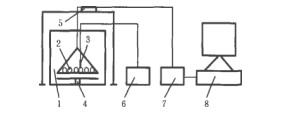
- Shandong Microwave Machinery Co.,Ltd.
- To be the Leader of microwave drying and edible oil refining equipments Manufacturer
Home> Company News> Effects of drying methods on the color, polyphenols and antioxidant activities of tartary buckwheat malt
- AddressNo. 225, Huangqiao Village, Beiyuan, Tianqiao District, Jinan, Shandong, China
- Factory AddressNo. 225, Huangqiao Village, Beiyuan, Tianqiao District, Jinan, Shandong, China
- Phone(Working Time)+86 0531 85064681
- Phone(Nonworking Time)0086-15020017267
- Fax+ 86 0531 85064682
Effects of drying methods on the color, polyphenols and antioxidant activities of tartary buckwheat malt
2018-11-19 15:12:37
Abstract The effects of vacuum freeze-drying, hot air drying, microwave drying equipment, natural dryness and drying on the content of polyphenols, components and antioxidant activities in tartary buckwheat malt and methanol extracts were studied. The results showed that different drying methods had significant effects on the color, polyphenol content, composition and antioxidant activity of tartary buckwheat.

Vacuum freeze-drying and hot air drying at 60 °C showed the least change in the color of bitter buckwheat malt, and the natural shade of buckwheat bud was the worst. The bitter malt contains a variety of polyphenolic compounds, the highest content is rutin, followed by quercetin and chlorogenic acid, and the drying method has a significant effect on these components. The total flavonoids and polyphenols in vacuum freeze-dried, 60 °C hot air drying and natural dry samples were significantly higher than other drying methods, and the samples had strong antioxidant activity, combined with color change during drying, vacuum freeze drying and hot air at 60 °C. Drying for the drying of tartary buckwheat can maintain the color and active ingredients of buckwheat bud to the utmost extent. In practical applications, it can be used according to the situation.
Key words :tartary buckwheat malt drying; drying method; color; polyphenols; total flavonoids; antioxidant activity
Buckwheat is native to China and belongs to the dicotyledon of the genus Quercus. Buckwheat has two cultivars, sweet and bitter. The polyphenols, flavonoids and antioxidant activities of tartary buckwheat extract were higher than that of sweet tart. The main components of polyphenols in buckwheat are flavonoids, which have the functions of maintaining capillary permeability, reducing brittleness, preventing blood cell agglutination, anti-inflammatory, anti-allergic, diuretic and strong heart; The element can increase the essential element content of the body, and also protect the liver and kidney and enhance immunity.
Modern medical research has found that buckwheat food has the effect of lowering blood fat and lowering blood sugar, and has special effects on diabetes. At the same time, it also has a good preventive and therapeutic effect on hyperlipidemia, cardiovascular disease and hypertension. Although bitter buckwheat contains many beneficial ingredients, it also contains various anti-nutritional factors such as protease inhibitors, which reduces the absorption and utilization of nutrients such as protein.
Bitter mites can reduce or eliminate the content of anti-nutritional factors after germination. The content of flavonoids in the bitter buds after germination is especially rich in rutin content; in addition, the production cycle of buckwheat buds is short and the cost is low. Therefore, the germination treatment of buckwheat can significantly improve the edible and medicinal value and economic benefits of tartary buckwheat.
Drying is widely used in the preservation of foods and their raw materials. Drying can reduce moisture, prolong storage time, and expand utilization and utilization range. However, unsuitable drying methods can cause damage to beneficial ingredients in foods and raw materials.
Guo Zemei et al studied the effects of drying methods on grape skin polyphenols and antioxidant activity. Lu Keke studied the effects of different hot air drying methods on the composition and antioxidant activity of Lentinus edodes. Lu Shuang et al studied different drying methods for mint. The effects of phenol, total flavonoids and antioxidants, but the drying of buckwheat buds has not been reported. In this experiment, bitter buckwheat buds were used as raw materials to study vacuum freeze-drying, hot air drying, microwave drying, natural drying, natural dryness and bitterness. The effect of bud color, total flavonoids, polyphenol content and components and antioxidant activity.
 High efficiency food beverage factory stone paper production line
High efficiency food beverage factory stone paper production line Factory price Fully automatic Machine PP/PS Plastic Sheet Production Line
Factory price Fully automatic Machine PP/PS Plastic Sheet Production Line used deformered bar rolling mill production line
used deformered bar rolling mill production line Manufacturing plant automatic factory puffed sticky rice cracker production line
Manufacturing plant automatic factory puffed sticky rice cracker production line Production Line Pp Ppr Plastic Pipe Making Machine 20-63mm Multi-layer Extrusion Production Line For Water Supply
Production Line Pp Ppr Plastic Pipe Making Machine 20-63mm Multi-layer Extrusion Production Line For Water Supply